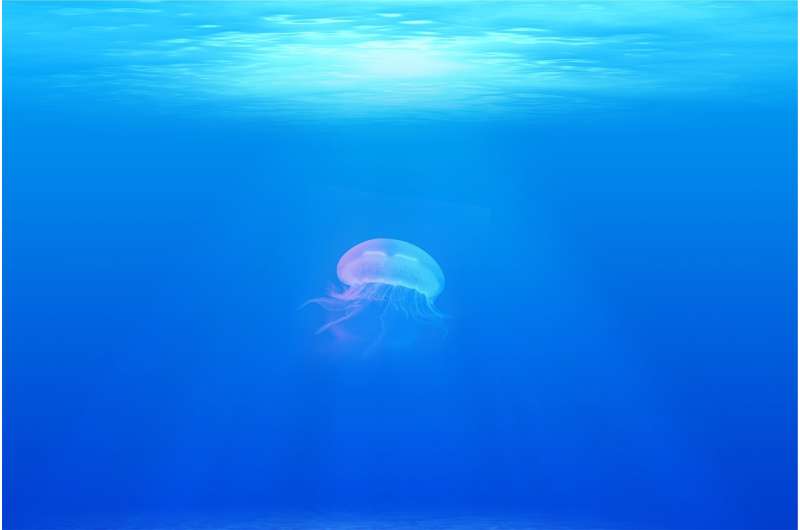Jurassic drop in ocean oxygen lasted a million years

Dramatic drops in oceanic oxygen, which cause mass extinctions of sea life, come to a natural end - but it takes about a million years.
The depletion of oxygen in the oceans is known as "anoxia", and scientists from the University of Exeter have been studying how periods of anoxia end.
They found that the drop in oxygen causes more organic carbon to be buried in sediment on the ocean floor, eventually leading to rising oxygen in the atmosphere which ultimately re-oxygenates the ocean.
Scientists believe the modern ocean is "on the edge of anoxia" - and the Exeter researchers say it is "critical" to limit carbon emissions to prevent this.
"Once you get into a major event like anoxia, it takes a long time for the Earth's system to rebalance," said lead researcher Sarah Baker, a geographer at the University of Exeter.
"This shows the vital importance of limiting disruption to the carbon cycle to regulate the Earth system and keep it within habitable bounds."
The researchers, who also include Professor Stephen Hesselbo from the Camborne School of Mines, studied the Toarcian Oceanic Anoxic Event, which took place 183 million years ago and was characterized by a major disturbance to the global carbon cycle, depleted oxygen in Earth's oceans and mass extinction of marine life.
Numerical models predicted that increased burial of organic carbon - due to less decomposition and more plant and marine productivity in the warmer, carbon-rich environment - should drive a rise in atmospheric oxygen, causing the end of an anoxic event after one million years.
To test the theory, the scientists examined fossil charcoal samples to see evidence of wildfires - as such fires would be more common in oxygen-rich times.
They found a period of increased wildfire activity started one million years after the onset of the anoxic event, and lasted for about 800,000 years.
"We argue that this major increase in fire activity was primarily driven by increased atmospheric oxygen," said Baker.
"Our study provides the first fossil-based evidence that such a change in atmospheric oxygen levels could occur in a period of one million years."
The increase in fire activity may have also helped end ocean anoxia by burning and reducing the amount of plants on land.
This is because plants can help to erode rocks on the land that contain nutrients needed for marine life - therefore with fewer plants, fewer nutrients are available to be carried to the sea and used to support marine life in the oceans.
Less marine life - that would use oxygen to breathe - would mean less oxygen being used in the oceans, and could therefore help the oceans to build up a higher oxygen content, ending anoxia.
It may therefore be essential to maintain the natural functioning of wildfire activity to help regulate the Earth system in the long-term, the researchers say.
The charcoal sediment tests were carried out at Mochras in Wales and Peniche, Portugal.
The paper, published in the journal Nature Communications, is entitled: "Charcoal evidence that rising atmospheric oxygen terminated Early Jurassic ocean anoxia."
More information: "Charcoal evidence that rising atmospheric oxygen terminated Early Jurassic ocean anoxia" Nature Communications (2017). DOI: 10.1038/ncomms15018
Journal information: Nature Communications
Provided by University of Exeter



















